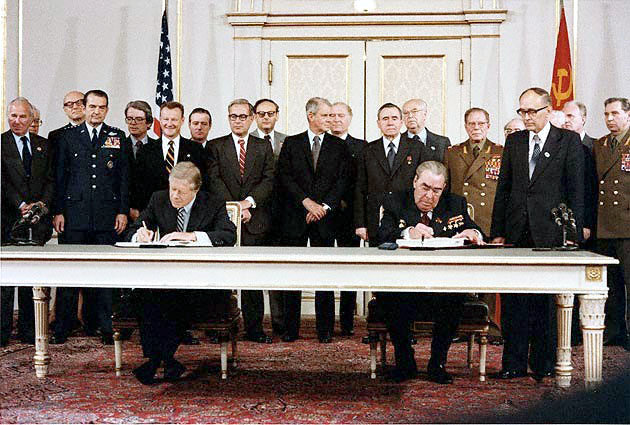Author: Zvedre, Y. K.
Published in National Security Journal, 09 July 2020

President Jimmy Carter and Soviet General Secretary Leonid Brezhnev sign the Strategic Arms Limitation Talks (SALT II) treaty, June 18, 1979, in Vienna. Source: US Government/Wikimedia Commons.
Since the mid-1980s, all Soviet space arms projects were structured to counter US President Ronald Reagan’s Strategic Defense Initiative (SDI) that was planned to develop a space-based missile defense system to protect the US from a large-scale nuclear attack from Soviet ICBMs. It involved many layers of technology that had yet to be researched and developed. Among the potential components were both space-based and ground- based laser battle stations, air-based missile platforms and ground-based missiles using non-nuclear technologies for the interception of incoming missiles. As a result of the general lack of required technological infrastructure, and therefore somewhat fictional basis of the SDI, critics of the proposal nicknamed it “Star Wars” after the science fiction “Star Wars” movies which were box office hits around the same time.
In June 1982 the US was already planning to test a new-generation airborne ASAT weapon, the Air-Launched Miniature Vehicle (ALMV) which, in the opinion of the USAF, had significant advantages over ground-based systems. The ALMV system consisted of a small two-stage missile launched from an F-15 aircraft flying at high altitude. It carried a heat-seeking Miniature Homing Vehicle (MHV) which would ascend to a target satellite in low Earth orbit and destroy or disrupt it using the “hit-to-kill” method. From 1984 to 1986, the USAF carried out five flight tests within the ALMV program:
